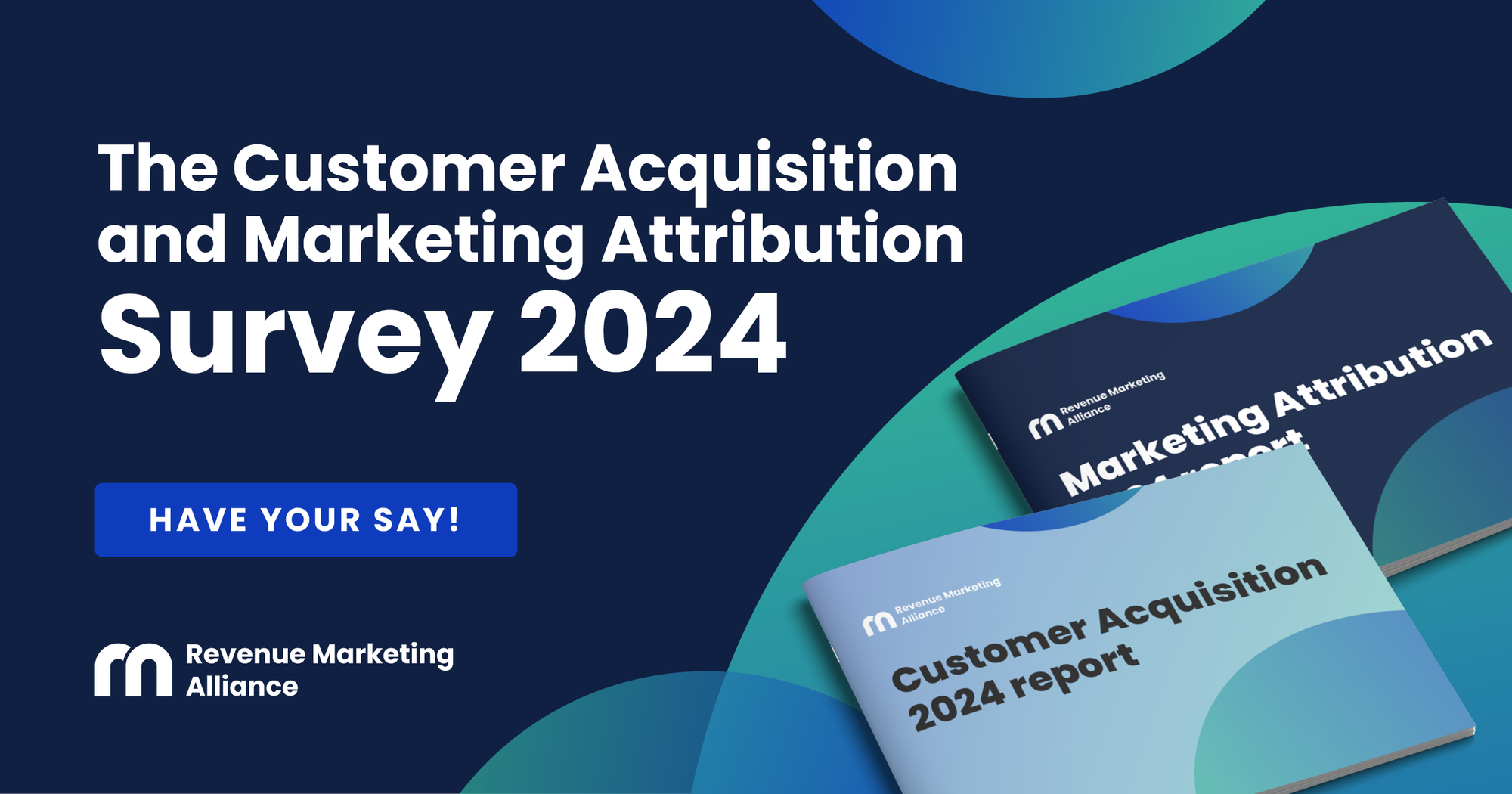As a marketer, understanding the campaigns, programs, and channels that influence revenue is crucial for success.
So, how are you determining whether your marketing efforts are performing well (or not so well)? Typically, this understanding hinges on using some software attribution tool and one of many attribution models available.
The goal of these tools is to help marketers uncover which channels are impacting revenue so they can make better decisions about where to allocate their budget. But, we’re realizing more that relying solely on traditional attribution isn’t good enough and software attribution certainly has its gaps. Why? Because it doesn’t capture the complete picture of customer behavior.
Depending on the model you’re using, you might even only be capturing the first or last interaction a buyer has with your brand and ignoring the other interactions made along the way.

Plus, with software attribution alone, offline channels can be overlooked entirely. If the only data you have is based on traffic sources like direct traffic, organic search, organic social, referrals, etc., then you’re bound to receive misleading results (and in my experience, this data always skews heavily toward direct and organic) that fail to paint a complete picture of what influenced a purchase.
In fact, Refine Labs conducted a study that showed a 90% measurement gap due to overreliance on software-based models. According to the study, dark social channels like social media, podcasts, online communities, and word-of-mouth are either drastically underreported or entirely ignored by software-based attribution.
This is why many B2B marketers are choosing to implement a hybrid attribution model (whether that includes first and last touch or a multi-touch model) in combination with self-reported attribution that can capture qualitative data directly from customers.
In this article, we’ll explore:
- What a hybrid attribution model can look like in your org
- How you can incorporate self-reported attribution to build a hybrid approach
- Why collecting both quantitative and qualitative data can help you understand the full customer journey and execute more cost-effective demand gen initiatives
What is a Hybrid Attribution Model?
Creating a hybrid approach to attribution means combining software-based methods with first-party reported methods to provide a more holistic view of marketing performance.
One way is implementing multi-touch software attribution alongside self-reported attribution. Multi-touch attribution models assign credit to every interaction automatically.
These interactions can each be weighted the same or be varied based on when they occur. Some common methods of multi-touch attribution are Linear, U-shaped, and Time Decay models.
Self-reported attribution on the other hand involves asking customers directly to identify the channels or experiences that led them to you and even influenced their buying decisions.
Using a hybrid approach addresses the limitations of traditional attribution and creates a powerful combination of data sources that looks at both online and offline sources throughout a buyer’s entire journey. By leveraging the quantitative and qualitative data collected, B2B companies can gain deeper insights into channel effectiveness and reduce the gap in measurement data.
![From Data to Dollars: How Generative AI Transforms Revenue, Digital, and Growth Marketing [eBook]](https://www.revenuemarketingalliance.com/content/images/2024/02/RMA_Date_to_Dollars_CTA_-10.png)
Implementing Self-Reported Attribution
So we know self-reported attribution is when you collect data directly from customers about how they discovered and engaged with your brand. How can you implement this successfully to gather that first-party data?
You could:
- Send customers a survey or questionnaire during discovery or post-sale
- Add a field to your lead capture form on your website or landing pages
- Ask prospects directly during your initial conversation with them
My favorite way to integrate self-reported attribution is by adding a “How did you hear about us?” field to your contact or demo request form on your website. You could create a dropdown field with several options for customers to select from, but this could limit responses and potentially bias their answers. Instead, use an open text field so customers can enter a more detailed response based on their specific experiences.
What about making it a required field? Forcing someone to answer it could lead to trash answers, but test it out and see what works best for your org and your target audience.
Collecting these answers helps you understand the touchpoints and channels that are actually creating demand. After a significant amount of data is collected, you can start analyzing by categorizing the form responses. Maybe something like LinkedIn, online communities, word of mouth, social selling, and review platforms (as an example).
One way to do this is by creating a workflow in your Marketing Automation Platform using your “How did you hear about us?” field and looking for keywords in responses then bucketing them together. You could also do this manually in a spreadsheet after exporting field responses.
From there, you can discover trends in responses and start to understand the offline channels that are creating opportunities and driving revenue.
Create a hybrid approach for better insights
Using self-reported attribution is not an either/or decision when you already have software attribution in place. You can and should use both, creating an effective hybrid approach — because they aren’t as powerful on their own.
Of course, there are limitations to self-reported attribution. Things like recency bias, in which people only remember their most recent interaction instead of how they first heard about you. It can also be difficult to tie this data back to specific campaigns.
Let’s say a lead comes in from direct traffic, but on your demo form they responded with “Google ad” in the “How did you hear about us?” field. Now you know it was a paid search, but if they didn’t click on an ad, it’ll be hard to tie that back to a specific ad campaign.
Software attribution is best to understand the online touchpoints people are interacting with along their journey and automatically tie that back to individual campaigns and channels.
But relying solely on software attribution encourages you to only focus on tactics that are easily measurable — even if they aren’t effective.
You might:
- Rely solely on gated content for immediate lead capture
- Only post tracking links on social media while foregoing other engagement points
- Ignore community building, podcasts, and other content marketing initiatives
- Only distribute content where it can be easily measured (like an email)

This is why a hybrid approach using self-reported attribution to discover effective offline channels works best in combination with software attribution. Now you’ll have a more holistic view.
Here’s why incorporating a combination of both multi-touch software attribution and self-reported attribution enhances the depth and accuracy of insights:
- Self-reported attribution is a low-effort, high-impact way to shed light on dark touchpoints
- A hybrid model introduces the human element into performance analysis and provides additional context and clarity that complements the quantitative data generated by software
- Marketers get a more comprehensive view of the customer journey by analyzing what software automatically captures and what real people are saying about their experience
Seeing this combination of data and analyzing it together makes it easier (and even more reliable) to identify the channels and tactics most effective in driving awareness and conversions.
A hybrid attribution model integrating self-reported attribution with software-based models creates a powerful combination for unlocking insights and closing a measurement gap.
By leveraging the strengths of both approaches, marketers can gain a better understanding of customer behavior, optimize marketing campaigns, and use budget efficiently, all while driving sustained growth.
Psst... now's your chance to influence the most important conversations in revenue marketing
How do leading marketers drive growth? What channels attract and convert customers? Where should budgets be allocated? What metrics matter most?
Our groundbreaking 2024 Customer Acquisition and Marketing Attribution Survey will reveal the inner workings of today's state-of-the-art revenue engines. And you can help uncover the key insights.
The insights gained will be invaluable for staying ahead of rapid changes in 2024.
This is your exclusive opportunity to shed light on:
- Current marketing attribution models and challenges
- The evolving customer journey to purchase
- How teams track and optimize funnel performance
- Emerging strategies to connect with modern buyers
- Key focus areas for growth in 2024
… And a whole lot more.
Take the survey, and at the end, receive a comprehensive Customer Journey framework slide deck to help you and your team acquire more customers with less stress! 👇




 Follow us on LinkedIn
Follow us on LinkedIn



